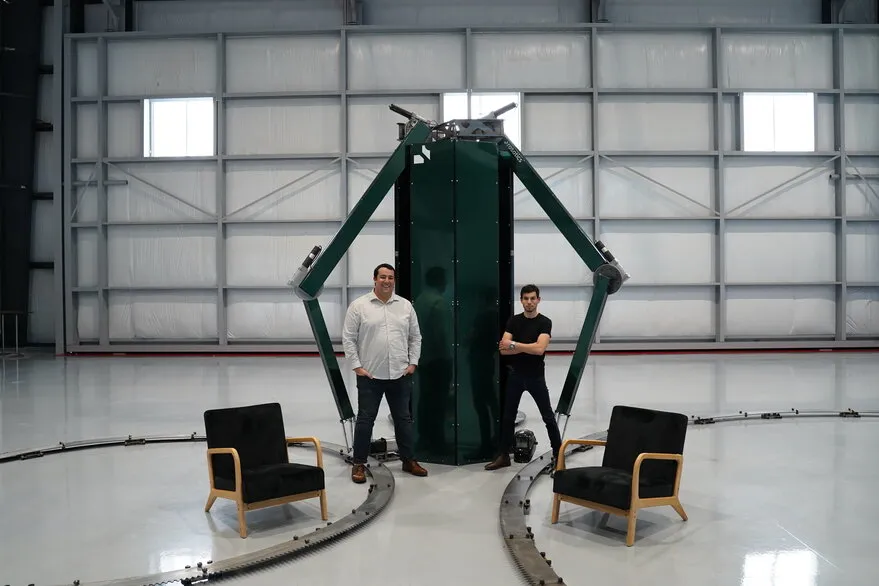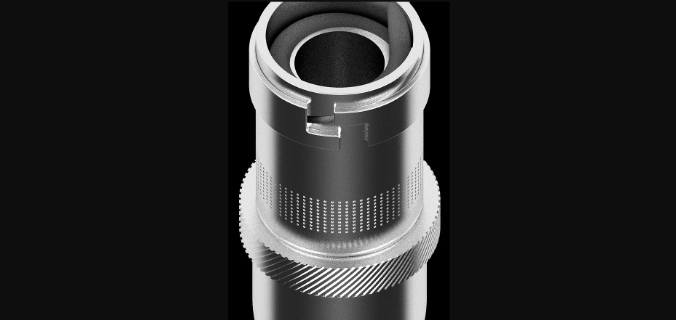45kg per hour: Rosotics debuts new Mantis large-format, high throughput, metal 3D printer
Rosotics, a metal additive manufacturing company, has revealed the first prototype of its Mantis printer. This large-format machine can be folded up after it is used, making it easy for transport and packing.
The first Mantis printers, which can print 45kg per hour with power from a standard 110V outlet, will be delivered in October. Prices are expected to start at $95,000. Rosotics claims their printer is capable of printing large-format components measuring up to 30 feet by 30 feet.
Expanding production and scaling up applications
Rosotics, which is currently focused on aerospace applications only, hopes to increase production through the development of its newest printer.
The company has already established an assembly line for Mantis production at the Falcon Field airport in Mesa, with Rosotics Founder and CEO Christian LaRosa hoping to scale up production to “dozens of these machines each quarter” in the near future. Rosotics had been putting off the closing of any deals in order to launch Mantis. However, LaRosa claims that the company has begun conversations and visited potential buyers in the aerospace sector.
Looking to the future, Rosotics hopes to broaden Mantis’s applications beyond aerospace. Rosotics plans to increase the variety of feedstocks used by the printer to expand its reach to new sectors, such as energy and maritime.
The unveiling of the Mantis follows last year’s announcement that Rosotics had raised $750,000 in a pre-seed funding round led by Draper Associates. At the time, Rosotics COO Austin Thurman stated, “although we are starting in aerospace, our vision is that we will soon be able to create some part of everything. Mantis is just the beginning, and as our process becomes more dynamic there will be no size limit to what we can build and where we can build it.”

Printing by rapid induction
Mantis employs Rosotics’ new rapid induction method to print parts in aerospace-grade steel and aluminum.
Laser-based 3D printing methods that use only one nozzle are more energy-intensive and pose risks for the user than traditional laser-based printing methods. Instead of heating the material outside, rapid induction uses heat induction within the feedstock to create a liquid flow. This method uses significantly less energy, and has a lower material consumption than other techniques. “Having a new process that is more efficient [and] does away with the laser entirely allows you to not only push more mass through that nozzle, but you can also run more nozzles at the same time,” commented LaRosa.
Rosotics has induction capabilities for ferrromagnetic materials, such as iron alloys. However, Rosotics only recently discovered how to inductive print on non-ferromagnetic material like aluminum. The firm created a specialized printing device by using a combination of cobalt and other materials. LaRosa claims this nozzle can be used to print aluminum with rapid induction. This allows for the same output and power as with steel.

Aerospace additive manufacturing
Relativity, a California-based startup, recently launched its 3D printed Terran 1 rocket out of Cape Canaveral Space Force Station, Florida. Whilst the rocket, 85% of which is 3D printed, failed to make it to orbit, the company attested that Terran 1 had achieved most of its mission’s milestones. LaRosa called the event “a testament to the robustness of 3D printing, and what you can produce, and how strong those parts can be.”
It was also announced in March that Vast, a developer of space habitation technologies, had completed the purchase of Launcher (a US aerospace company). Through this deal, Vast hopes to further develop and leverage Launcher’s 3D printed space rockets, such as the E-2 liquid rocket engine, to help achieve their mission of creating artificial gravity space stations. “The next step for innovation is habitation. We are developing low-cost stations and artificial gravity so that people can live in space for long periods of time without the permanent side effects of zero-gravity,” commented Vast Founder and CEO Jed McCaleb.
Subscribe to the 3D Printing Industry newsletter Keep up-to-date with 3D printing news. You can also follow our blog TwitterLike our Facebook Page, and Subscribe to the 3D Printing Industry YouTube Channel to get more exclusive content
Are you interested working in the additive-manufacturing industry? Visit 3D printing jobs To view available positions and jumpstart your career, click here
The Mantis 3D printer is featured in the featured image. Photo by Rosotics.